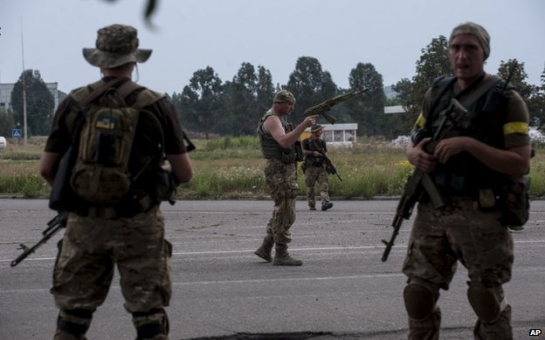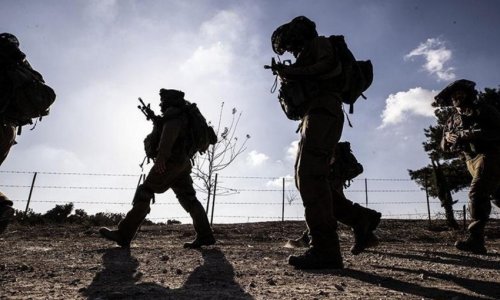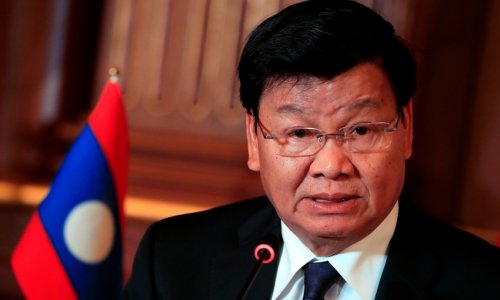It is believed the aid is meant primarily for the rebel-held city of Luhansk, home to 425,000 people before the conflict erupted in April, and now under government siege.How bad is the situation in Luhansk?In the words of the International Committee of the Red Cross (Red Cross), the situation in Luhansk and other rebel-held areas is "critical - thousands of people are reported to be without access to water, electricity and medical aid".By 11 August, Luhansk's remaining inhabitants were spending their ninth day in "total isolation", without electricity or running water, while neither land lines nor mobile phone connections were working, the city council said on its website (in Russian).As shelling continued, it said, most of the shops were closed although city bakeries still managed to bake bread. No food, medicine or fuel was being brought into the city. Shell damage to the municipal bin lorry fleet meant that waste collection had been disrupted.City employers had been unable to pay their staff for a month, nor were pensions and welfare benefits being paid.The daytime temperature is currently above 30C, compounding the misery of residents without water and no power to run fans or air conditioners.With many people seeking refuge in other parts of Ukraine or over the border in Russia, the city's population has dropped to 250,000, according to the council.War in Ukraine: the human costCasualties: At least 1,543 people have been killed in the east since mid-April, including civilians, the military and members of the armed groups, the UN said on 8 August. Some 4,396 have been confirmed wounded "but the real number is likely to be much higher". Ukraine said on 11 August that 468 of its soldiers had been killed. The rebels have reported losing at least 800 fighters.Refugees: Nearly 300,000 people have been forced from their homes this year. More than 117,000 are displaced inside Ukraine, 87% of them from the Donetsk and Luhansk regions, while a further 168,000 have crossed into Russia. Source: UN refugee agencyWhat's in the Russian lorries?Russian media say the convoy of 280 Kamaz lorries is carrying 2,000 tonnes of aid and that it will be met at the Ukrainian border by the Red Cross."Our lorries will not cross the border with Ukraine, the cargo will be transferred," Russia's emergencies ministry told BBC News in Moscow. "But how will this happen is yet unknown. It is not for us to decide how to do it, but primarily the Red Cross. Currently we are only accompanying the cargo."The aid was donated by "Muscovites and residents of the Moscow region", according to the Moscow regional government, and includes400 tonnes of cereals100 tonnes of sugar62 tonnes of baby food54 tonnes of medical items and medicines12,000 sleeping bags69 electricity generatorsRussian-language blogger Rustem Adagamov wrote (in Russian) after studying photos of the convoy that it was the "most unusual aid convoy" he had seen. He noted that it had set out from a military base near Moscow (Alabino) in unmarked lorries, apparently with drivers in military uniform.However, Adagamov appeared to believe the convoy was genuinely carrying aid, albeit as part of "another show of force".Are the Red Cross happy?The International Committee of the Red Cross agreed to distribute Russian aid provided full details were supplied in advance. It also made clear that it did not accept armed escorts.However, the Red Cross statement had hardly been released before the Russian convoy took to the road for the journey, estimated to take between two and three days.Andre Loersch, a Red Cross spokesman, said that while the organisation had reached a general agreement about delivery of humanitarian aid to the region, he had "no information about the content" of the lorries and did not know where they were headed."At this stage we have no agreement on this, and it looks like the initiative of the Russian Federation," he was quoted as saying by AP news agency.Is this a Russian Trojan Horse?With an estimated 20,000 Russian soldiers deployed along the Ukrainian border until recently, Nato chief Anders Fogh Rasmussen told Reuters he saw a "high probability" of a Russian military intervention."We see the Russians developing the narrative and the pretext for such an operation under the guise of a humanitarian operation, and we see a military build-up that could be used to conduct such illegal military operations in Ukraine," he said.French Foreign Minister Laurent Fabius warned the convoy "could be a cover for the Russians to install themselves near Luhansk and Donetsk and present us with a fait accompli".Why might Russia want to send troops in?Russia has long been accused of encouraging the separatists and supplying them with weapons and volunteers. A Russian-supplied anti-aircraft missile was blamed for downing Malaysia Airlines flight MH17 in eastern Ukraine in July, with the loss of 298 lives.Ukrainian military gains against the rebels, pushing them back towards their strongholds in Donetsk and Luhansk, mean that if there is ever a time for the Russian military to intervene openly, it is probably now.It would not be the first time Russia's troops intervened in Ukraine but its annexation of Crimea in March was virtually bloodless, whereas the war in eastern Ukraine has claimed at least 1,500 lives since April.What does the Kremlin say?A Kremlin spokesman told the BBC's Steve Rosenberg on Tuesday that both the Red Cross and the authorities in Kiev had agreed to the Russian convoy.Russian President Vladimir Putin's press secretary, Dmitry Peskov, told Russian media that the idea that a covert military operation was being conducted in the guise of humanitarian aid was "absurd".Are the Ukrainians on board?Officials in Ukraine say they will not allow any convoy accompanied by the Russian military or Russian emergencies ministry staff to enter its territory.There are suggestions that local transport companies will be used to pick up the aid at the border instead.Earlier, Leonid Kuchma, a former president of Ukraine, told Interfax news agency that a route had been agreed for the convoy, entering Ukraine through Kharkiv, which is outside the war zone, and proceeding to Luhansk.The aid, he said, would be delivered "under the aegis" of the Red Cross and the convoy would be accompanied by representatives of the Organization for Security and Cooperation in Europe (OSCE). It would also include aid from "Ukraine, the EU and the USA".Another report speaks of Sumy region, also outside the war zone, as a possible crossing-point.Meanwhile, the rebels are believed to control about 100km (60 miles) of the Ukrainian border themselves.(BBC)Bakudaily.Az
Ukraine conflict: Russian aid or Trojan Horse?
World
10:30 | 13.08.2014

Ukraine conflict: Russian aid or Trojan Horse?
Russia's dispatch of a huge convoy of lorries carrying humanitarian aid to east Ukraine has raised suspicions about its intentions, given its support for the rebels fighting the Ukrainian government there.
Follow us !










